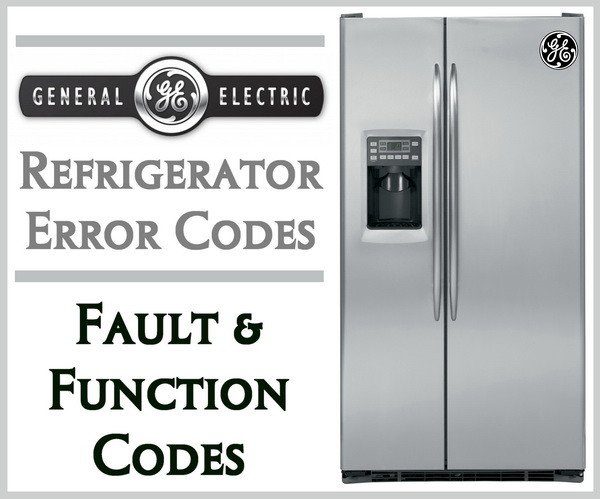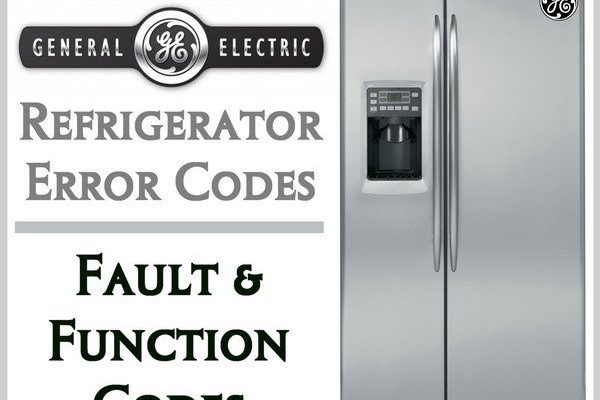
When your household appliances start talking back in cryptic codes, it’s their way of saying, “Something’s not quite right here.” With Error E3, your GE fridge is alerting you to an issue with its defrost cycle. Think of the defrost cycle as your fridge’s way of shaking off any frost buildup, similar to how you might brush snow off your car in winter. If this process is interrupted, your fridge may not cool properly, leading to spoiled food and a rather unhappy you.
Understanding Error E3 in GE Refrigerators
So, what exactly is Error E3 in your GE refrigerator, and why should you care? Let’s dive deeper. The error indicates a hiccup in the defrost process, which is essential for maintaining optimal temperature. Imagine if your fridge decided to wear a thick coat of ice — not exactly efficient, right? This frost buildup can hamper cooling, much like wearing too many layers on a warm day might make you sweat.
The defrost cycle’s job is to melt away any frost that accumulates on the evaporator coils. When E3 rears its head, it’s telling you that this cycle isn’t kicking in as it should. This could be due to several reasons, such as a faulty defrost timer or a malfunctioning thermostat. Think of these components as essential team players on a basketball team. If one player is not performing, the entire team’s strategy can fall apart.
Ignoring this error, while tempting, can lead to bigger problems down the road. Left unchecked, it might escalate into a situation where your refrigerator’s interior becomes a mini Arctic, affecting everything from cooling efficiency to energy consumption. And let’s face it, nobody wants a fridge that’s a power-hungry monster or a food-spoiling machine. So, ensuring each component works correctly is vital to keep your fridge running smoothly.
Consequences of Not Fixing Error E3
You might be tempted to delay fixing Error E3, thinking it’s no big deal. But, much like ignoring a leaky faucet, the repercussions can sneak up on you. One of the most immediate effects is that your fridge will lose its ability to maintain a consistent temperature. This inconsistency can lead to food spoilage, which not only wastes money but also poses health risks. No one wants to discover that their groceries have turned into a breeding ground for bacteria.
Moreover, a malfunctioning defrost cycle means your refrigerator’s components are working harder than they should. Imagine trying to drive with the brakes on — you’re using extra fuel and causing unnecessary wear and tear on the car. Similarly, your refrigerator, when laboring under frost, consumes more electricity and may lead to higher energy bills. In the long run, this stress can speed up the inevitable — more costly repairs or even a total replacement.
Finally, let’s talk about the silent yet impactful aspect — noise. A refrigerator struggling with an excess load might start to sound like a freight train. Not only is this noise annoying, but it’s also a sign that your appliance is under duress. Consistently ignoring these signs can lead to irreversible damage. Taking the time to address the E3 error can save you from future headaches and ensure your fridge keeps cooling like a dream.
Possible Causes and How to Address Them
Tackling the root cause of the E3 error can seem daunting, but with a little knowledge, it’s manageable. The usual suspects causing this error are a faulty defrost heater, a broken defrost thermostat, or a malfunctioning defrost timer. Picture these components as a relay race team. If one member drops the baton, the race is disrupted. Similarly, if one part of the defrost mechanism fails, the whole cycle can be thrown off course.
The defrost heater is like a gentle sunbeam, melting away the frost from the coils. If it’s defective, the ice buildup won’t melt, leading to the error. Replacing this heater might sound like a big task, but with the right guide, it’s akin to swapping out an old light bulb. On the other hand, the thermostat acts as a sentinel, monitoring temperatures. If it fails, it can’t trigger the heater when necessary.
Lastly, the defrost timer ensures cycles occur regularly. Imagine it as your fridge’s personal trainer, keeping it in shape by scheduling workouts. If it stalls or fails, the cycle won’t start, much like your morning without a coffee. Addressing these issues might mean seeking professional help, but sometimes just understanding the problem can lead you to a simpler solution, like replacing a faulty part.
Preventative Tips for Avoiding Future Errors
Preventing future symptoms of Error E3 involves a blend of regular maintenance and keen observation. Think of it like taking your car for routine check-ups to avoid breakdowns. Start by cleaning your fridge’s coils every six months. Dust and grime can build up, much like cobwebs in untouched corners of your home, affecting the unit’s efficiency.
Ensure the refrigerator door seals are clean and not cracked. Much like an open window affects your room’s cooling, broken seals can lead to temperature inconsistencies. Regularly check if the interior light goes off when the door closes. If it doesn’t, it’s like leaving your car’s headlights on — draining valuable energy without you realizing it.
So, here’s the deal: addressing issues as soon as they arise, rather than brushing them under the proverbial rug, can save you time, energy, and money. By being proactive and understanding the warning signs, you’ll keep your fridge running efficiently and extend its lifespan. After all, a little effort goes a long way in maintaining a happy, healthy home appliance.
